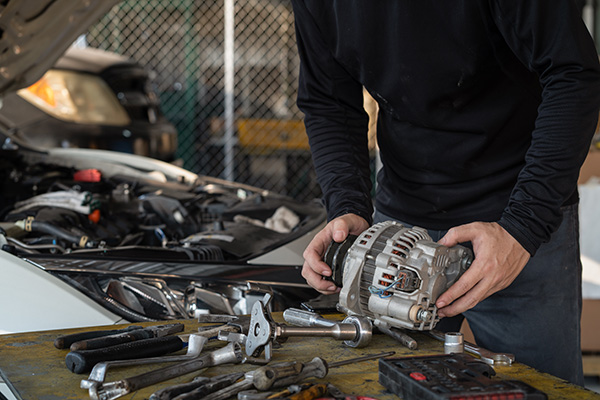Posted on 10/31/2024

Ferrari. The name alone evokes a sense of speed, luxury, and prestige. But how did this Italian car manufacturer rise from humble beginnings to become one of the most iconic automotive brands in the world? Ferrari’s journey to legendary status didn’t happen overnight—it’s the result of decades of innovation, racing triumphs, and a relentless pursuit of perfection. Let’s explore the history and key elements that helped Ferrari cement its place as a legendary car brand. A Passion for Racing The story of Ferrari begins with its founder, Enzo Ferrari, whose love for racing shaped the entire philosophy of the brand. Enzo Ferrari wasn’t just interested in building cars—he wanted to build the fastest, most competitive racing machines on the planet. In 1929, he founded Scuderia Ferrari as a race team for Alfa Romeo, managing and running cars for various drivers. However, Enzo's vision went beyond just managing a race team. He wan ... read more
Posted on 9/27/2024

Owning a Maserati Ghibli is more than just driving a luxury vehicle. It's an experience that blends performance, style, and prestige. However, like any high-performance car, proper maintenance is crucial to keep your Maserati Ghibli running at its best. Following some key maintenance practices is necessary if you want to preserve that exhilarating drive and sleek look. Wondering where to start? Here are the top five maintenance tips to ensure your Maserati Ghibli stays in top shape for years to come. 1. Stick to the Maserati Service Schedule One of the most critical aspects of maintaining your Maserati Ghibli is adhering to its recommended service schedule. Maserati has designed specific intervals for oil changes, brake checks, and fluid inspections that are tailored to the car’s needs. Missing even one scheduled service can affect the performance and longevity of your vehicle. Regular oil changes, in particular, help keep the engine lubricated and prevent ... read more
Posted on 8/30/2024

When you're driving and suddenly notice the battery warning light illuminating your dashboard, it can be a cause for concern. This warning light is an indicator of issues within your car's electrical system, and one common culprit is a faulty alternator. The alternator plays a crucial role in keeping your car's battery charged and ensuring all electronic components function properly. Understanding how a malfunctioning alternator can trigger this warning light and what steps to take can help you avoid more serious problems down the road. The Role of the Alternator in Your Car Your car's alternator is more than just a part of the engine; it's the heart of your vehicle's electrical system. It's responsible for charging the battery and powering the electrical systems while your car is running. Essentially, it converts mechanical energ ... read more
Posted on 7/26/2024

In the quest for better fuel efficiency, automotive manufacturers have turned to a seemingly straightforward solution of adding more gears to automatic transmissions. But how exactly do these extra gears contribute to improved fuel economy? We will explain the mechanics and benefits of multi-gear transmissions, explaining why modern vehicles with more gears can travel further on a tank of gas compared to their older counterparts. The Basics of Transmission Gears Transmissions are essential for controlling the power from the engine to the wheels. In an automatic transmission, gears play a crucial role in managing the engine's workload, allowing it to operate efficiently across various speeds. Traditional automatic transmissions typically featured four to six gears. Modern advancements have introduced transmissions with eight, nine, or even ten gears. These additional gears allow the engine to run at its most efficient speed more often, reducing fuel consump ... read more
Posted on 6/28/2024

When it comes to enhancing your car's performance, traditional upgrades like engine tuning and component replacements are often the first to come to mind. However, there are several unconventional methods that can take your driving experience to the next level. Ready to unlock your car's full potential? Let's explore five surprising ways to boost your car's performance. Aerodynamic Modifications Aerodynamic modifications aren't just for race cars - they can also significantly impact everyday driving. By enhancing the aerodynamics of your vehicle, you can reduce drag and increase stability, especially at higher speeds. Here are a few modifications to consider: Front Splitters and Rear Spoilers: These additions help manage airflow around the vehicle, reducing lift and increasing downforce, which improves traction and handling. Side Skirts: These can help manage the air that flows underneath the car, reducing turbu ... read more